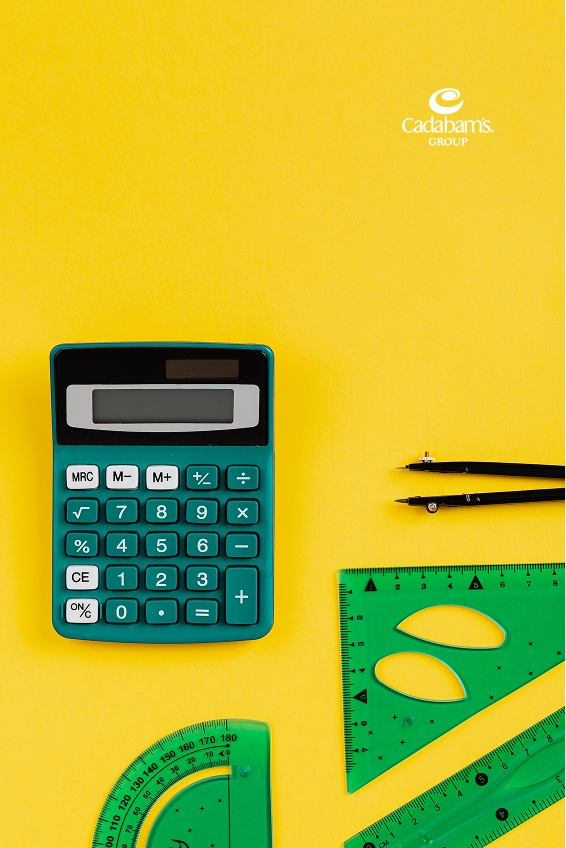Body Dysmorphia
Body dysmorphia, or body dysmorphic disorder (BDD), is a mental health condition where individuals obsess over perceived flaws in their appearance, often minor or unseen by others.
This obsession causes distress, anxiety and impacts daily functioning, sometimes leading to social avoidance and seeking cosmetic procedures. In this blog, we'll cover the common symptoms, how it's diagnosed, available therapy options, and effective treatment approaches to help manage BDD.
Common Signs and Symptoms of Body Dysmorphia
Common Symptoms
- Preoccupation with appearance flaws
- Repetitive checking or avoiding mirrors
- Camouflaging with makeup or clothing
- Constant comparison with others
- Repeated cosmetic procedures
- Anxiety, depression, or social withdrawal
Our Professionals
Causes and Risk Factors of Body Dysmorphia
Body dysmorphia arises from genetic, psychological, and social factors, including childhood trauma, perfectionism, and cultural beauty standards.
Social media and peer pressure significantly increase the risk, particularly among adolescents and young adults.
Genetic and Neurological Factors
Body dysmorphia may stem from genetic influences and brain chemistry. An imbalance in serotonin levels can contribute to obsessive thoughts. Studies also show abnormalities in brain regions responsible for visual processing.
A family history of BDD or related disorders increases susceptibility, pointing to both inherited traits and learnt behavioural patterns.
Childhood Trauma and Early Negative Experiences
Experiences like bullying, teasing, or parental criticism related to appearance can deeply affect a child's self-image. Emotional neglect or abuse may lead to insecurity and body shame.
When love or approval is tied to looks, it disrupts healthy attachment, fostering long-term struggles with body perception and self-worth.
Perfectionism and Low Self-Esteem
Many individuals with BDD struggle with perfectionism and harsh self-judgment. They set unrealistic standards for how they should look and often feel their appearance never measures up.
This internal pressure fuels constant dissatisfaction and anxiety, frequently linked to obsessive or anxious personality traits and a fragile sense of identity.
Cultural and Societal Pressure
Society often glorifies narrow beauty standards—whether it's thinness, muscle definition, or fairness. These ideals are reinforced by media and social expectations, pressuring individuals to conform.
Gender norms and peer influence can deepen appearance-related anxiety, making people feel inadequate when they don't match the idealised body images portrayed around them.
Impact of Social Media on Appearance Anxiety
Social media platforms amplify appearance anxiety by showcasing heavily edited, filtered images. Influencer-driven beauty ideals and comparison culture create unrealistic expectations.
Algorithms often push body-centric content, trapping users in a cycle of self-doubt. This has led to rising body dysmorphia symptoms, especially among teens active on apps like Instagram.

Types of Body Dysmorphic Disorder
Body Dysmorphic Disorder (BDD) can present in two recognised subtypes that require tailored therapeutic approaches:
- Muscle Dysmorphia (MD): Involves a distorted belief that one’s body is not muscular or large enough. Individuals may over-exercise, avoid social situations, follow rigid diets, and rely heavily on appearance for self-worth. Steroid use and denial of mental health issues are also common. They may spend hours daily adjusting meals or training routines, often comparing their physique to others and avoiding mirrors or public settings where their body might be exposed. Sometimes called “bigorexia” or “reverse anorexia,” MD shares some overlap with eating disorders, but the core concern is muscle size and definition, not weight or fat. Dietary rigidity is common, though not universal.
- BDD by Proxy (BDDBP): Characterised by obsessive concern over another person’s perceived physical flaws, often a partner or family member. This leads to excessive checking, reassurance-seeking, and avoidance of situations that might reveal the imagined defect. Preoccupation may shift between individuals and typically centres around hair, skin, or facial features, with compulsions to “fix” or hide the flaw often interfering with relationships and daily life.
Both subtypes benefit from modified CBT and medication support, with treatment tailored to the specific thought patterns, behaviours, and triggers involved.
Emergency service
Find nearest mental health center now

Rehabilitation and Recovery Support for Body Dysmorphia
Rehabilitation programs for Body Dysmorphia focus on therapeutic interventions, support groups, and structured care to help individuals regain a healthier relationship with their bodies.
Peer support and family involvement play a crucial role in offering emotional support, promoting understanding, and reinforcing recovery strategies for lasting change.
When and Why to Seek Professional Help for Body Dysmorphia?
Understanding when and why to seek professional help for body dysmorphia is crucial for effective treatment and to prevent the disorder from negatively impacting your life.
- When Self-Help Isn't Enough: Self-help strategies may not be enough if negative thoughts persist and disrupt daily life. If symptoms worsen or don't improve, professional help is essential.
- Benefits of Early Diagnosis and Intervention: Early intervention can prevent the disorder from worsening, provide personalised treatment, and reduce long-term mental health impacts.
- When to Consider Therapy or Rehab for Body Dysmorphia: If the disorder causes significant distress, self-harm or affects daily functioning, body dysmorphia therapy or rehab can help address the issue and improve well-being.
Choose Cadabam's for Expert Body Dysmorphia Treatment
Cadabam's offers specialised, compassionate care for Body Dysmorphia with a team of experienced professionals. Our unique facilities include a dedicated women's rehab centre, ensuring a safe and supportive environment for female individuals.
We provide personalised body dysmorphia therapy plans tailored to each individual's needs, helping them on their recovery journey.
Take the first step toward recovery. Contact Cadabam's today for a consultation!
If you are searching for a solution to your problem, Cadabam’s Rehabilitation Centre can help you with its team of specialised experts. We have been helping thousands of people live healthier and happier lives for 30+ years. We leverage evidence-based approaches and holistic treatment methods to help individuals effectively manage Body Dysmorphia. Get in touch with us today. You can call us at +91 96111 94949.
Listen to Our Expert Insights on Body Dysmorphia
Our centres where we treat Body Dysmorphia
Diagnosis and Clinical Evaluation of Body Dysmorphia
Accurate diagnosis of Body Dysmorphia involves clinical assessment, standardised criteria, and careful differentiation from other mental health conditions.
- Diagnostic Criteria Based on DSM-5: Your description of preoccupation with perceived flaws, repetitive behaviours, and significant distress or impairment aligns directly with the DSM-5 criteria for BDD.
- Clinical Interviews and Psychological Assessments: Mental health professionals indeed rely on in-depth interviews and various psychological assessments to thoroughly understand an individual's symptoms, history, and the impact of their concerns on their life.
- Ruling Out Other Mental Health Conditions: Differential diagnosis is a crucial step in evaluating BDD. It's essential to distinguish it from conditions with overlapping symptoms, such as Obsessive-Compulsive Disorder (OCD), eating disorders, social anxiety disorder, and even delusional disorder.
- Self-Assessment Tools and Questionnaires: Tools like the Body Dysmorphic Disorder Questionnaire (BDDQ) are commonly used as screening instruments to help identify potential body dysmorphia symptoms and prompt further comprehensive evaluation by a mental health professional.
Therapy and Treatment for Body Dysmorphia
Effective Body Dysmorphia treatment involves a combination of therapy, medication, and holistic approaches to address the mental and emotional challenges of the disorder.
CBT for Body Dysmorphia
Cognitive Behavioural Therapy (CBT) for Body Dysmorphia helps individuals challenge negative thoughts and behaviours linked to appearance. CBT teaches healthier coping mechanisms and thought patterns, reducing the distress caused by perceived flaws.
It is one of the most effective therapies for treating BDD, focusing on breaking the cycle of obsession and compulsion.
Exposure and Response Prevention (ERP)
ERP involves gradually exposing individuals to situations that trigger appearance-related anxiety while preventing compulsive behaviours like mirror checking.
This method helps individuals build tolerance to anxiety, reducing the need for avoidance and compulsions and leading to long-term relief from BDD symptoms.
Medication and Pharmacological Support
Antidepressants, particularly selective serotonin reuptake inhibitors (SSRIs), are often prescribed for BDD. Medication helps manage symptoms of anxiety and depression commonly associated with BDD.
When combined with body dysmorphia therapy, medication can be an effective treatment for improving overall mental well-being and reducing obsessive thoughts.
Holistic and Supportive Therapies
A variety of holistic and supportive therapies can complement traditional body dysmorphia treatment approaches and support emotional well-being.
Mindfulness-Based Cognitive Therapy (MBCT) blends mindfulness practices with cognitive behavioural therapy to help individuals manage emotional distress more effectively.
Yoga and deep breathing exercises serve as powerful relaxation techniques, helping to reduce stress while improving body awareness.
Art and expressive therapies offer creative ways to process emotions and explore new perspectives on body image.
Additionally, nutrition counselling plays a vital role in developing balanced eating habits and promoting overall self-care.
Lastly, body neutrality and self-compassion practices encourage individuals to accept their bodies without judgment and nurture a more compassionate relationship with themselves.
Subscribe to our newsletter
Find out about centres, daily updates and more about mental health

Why Cadabam's?
Cadabam’s is the best rehab centre for body dysmorphia treatment. With over three decades of experience, we focus on patient experience and provide excellent, solution-oriented treatment plans to meet the needs of you and your loved ones. With a wide range of evidence-based techniques, we stay with you every step of the way to give you the best body dysmorphia treatment.
Facilities & Amenities
Frequently Asked Questions
Yes, body dysmorphic disorder can affect people of any gender and age, though it often begins in adolescence. Both men and women can experience intense preoccupation with perceived flaws, and symptoms can persist into adulthood if untreated. Awareness and early support help improve outcomes.
Yes, social media can worsen Body Dysmorphia by promoting unrealistic beauty standards, leading to constant comparison. Filters and curated images distort self-perception, causing increased anxiety and obsession over appearance. Social media exposure can trigger or amplify BDD symptoms, especially in vulnerable individuals.
No, Body Dysmorphia is more severe than low self-esteem. While both involve negative self-image, BDD is characterised by intense, obsessive thoughts about perceived flaws, leading to compulsive behaviours. In contrast, low self-esteem may not cause such debilitating symptoms or disruptions.
Rehab programs provide structured therapy, support groups, and a safe environment for individuals with Body Dysmorphia. These programs help address obsessive thoughts, reduce compulsive behaviours, develop healthier coping mechanisms, and offer long-term support to improve overall mental well-being.
OCD and Body Dysmorphia are linked by obsessive thoughts and compulsive behaviours. Many people with BDD also experience OCD symptoms, like repeatedly checking their appearance or performing rituals to alleviate anxiety. Both disorders share similar underlying cognitive patterns and treatment strategies.
CBT for Body Dysmorphia helps reduce BDD symptoms by challenging negative thought patterns and compulsive behaviours. While it may not completely cure the disorder, it significantly improves emotional well-being and helps individuals develop healthier coping strategies for managing their condition.
Case Studies
Our Programs
Our Testmonials
Blogs you may be interested in
Helpline at your fingertips
+91 9611194949

.webp)








-min.webp)



.avif)

-min.webp)

.avif)

.avif)
.webp)

